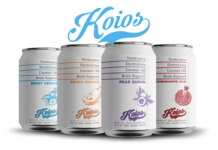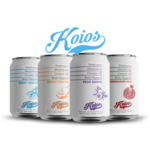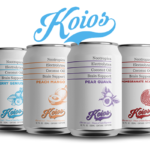According to the World Health Organization (WHO), the first decade of this century was the most productive in the history of vaccine development. The decade saw the introduction of vaccinations for rotavirus diarrhoea, types of meningitis and pneumonia, and for human papillomavirus (HPV) infections that cause cervical cancer. These are life saving vaccines, and there are more on the way. There are more than 80 vaccines in the late stages of global development, with close to 40% of these targeting life threatening diseases such as malaria and dengue fever.
Not surprisingly, in line with this expanded portfolio, revenues generated by the industry have increased dramatically. In 2005, global vaccine market revenues were $10 billion. During 2015, this had risen to $41 billion. UNICEF estimate that just over 80% of the world’s children now have access to immunization. To put this another way, coverage is now a far smaller problem than it was just a decade ago.
There are fresh problems, however, and as coverage has increased, and in line with coverage, demand, the primary issue now is the distribution network that underpins the coverage.
Specifically, a concept called the cold chain.
The majority of commonly recommended vaccines require storage temperatures of 35°F-46°F (2°C-8°C) and must not be exposed to freezing temperatures. Some of the more modern vaccines, namely varicella vaccine live attenuated influenza vaccine (LAIV), need to be stored at a continuously frozen state. These costs of the cold chain extend to both the developing world, and developed economies such as the US and Europe. In the developed world, the infrastructure exists to maintain the cold chain, but it’s expensive. In the developing world, the cold chain necessitates a tiered structure, through which a central unit will distribute to regional healthcare entities, in an attempt to minimize the required stock holding of the vaccines regionally (because it’s expensive to refrigerate things in regional African centers, for example).
Bottom line, the cold chain adds a premium to the price of vaccines, which someone must bear. In many instances, it’s the drug makers. In some, it’s the network operators. Estimates as to the scale of this cost vary, with the high end suggesting an 80% premium and the low end a 20% premium.
If a company can find a way to allow for the breaking of the cold chain, and remove the necessity for the vaccines being stored and transported to do so within a low temperature range, there’s a massive global market for its technology.
One company has spent the last five years doing just that, and it’s put together a batch of data that suggests it has succeeded.
The company is VBI Vaccines, Inc. – Ordinary Shares (NASDAQ:VBIV).
VBI is a vaccine developer that formed by way of a merger early in 2016 between a company called SciVac, and a company called VBI Vaccines. The two merged, combined operations, and moved forward as VBI under the ticker VBIV. SciVac brought into the merger its hepatitis B vaccine, Sci-B-Vac, which is a standard of care hepatitis vaccine in Israel (where it is administered to almost every child as standard of care) and 14 other countries across Europe, Africa and South America. The vaccine is in the late stages of the development process required for a US approval, and there’s a large market on offer if the FDA follows in the footsteps of the Israeli health authorities and accepts the vaccine for commercialization.
That’s not the focus of this discussion, however.
VBI brought with it two technologies – one, a platform that develops a third generation of vaccines, which are designed to mimic viruses as closely as possible and, in doing so, have a far higher immunogenicity than the current generation. This platform is called the eVLP platform, and VBI is currently working on a cytomegalovirus vaccine, and a brain cancer vaccine (designed as an immunotherapy tool) under the framework of this technology. Again, however, that’s not the focus of this discussion.
The focus is the second technology brought to the table – a technology called the LPV Thermostability Platform, or LPV TP. The processes that underpin the platform are not public, which isn’t surprising gibing the game changing nature of the technology involved. However, from the available literature, it’s possible to deduce that by using a combination of synthetic lipids (MPG, DCP, and Cholesterol) in proprietary ratios, the platform reduces moisture content during what are called lyophilization cycles. These cycles are a sort of freeze drying process, and normally aren’t that effective with vaccines. Include the proprietary mix of lipids, however, and VBI has proven its able to reduce moisture ingress in the vaccines. A reduced moisture ingress removes the necessity for refrigeration or freezing, and – by proxy – remove the need for a cold chain.
This isn’t just conceptual stuff, either.
VBI has data in hand that proved the commercial MMR vaccine potent at 8 weeks, kept at body temperature. It has the same data for a Herceptin like vaccine. With the common influenza virus, its LPV TP extended potency to 12 months at a little over body temperature. Rabies vaccine, which is essentially useless within hours of being removed from the cold chain, held its potency for 18 months at body temperature once it had been exposed to the LPV TP.
It’s hard to underestimate the importance of these numbers. The company could (using the numbers referenced above) save big pharma anywhere between 20% and 80% on its vaccine costs, some of which will pass to consumer, of course, but a large portion of which could be cost savings for the big pharma entities in question.
These companies are recognizing this, and VBI is drawing some big name partners on the back of the platform’s potential.
In April 2016, the company entered into a research collaboration with Sanofi SA (ADR) (NYSE:SNY), under which Sanofi will use the LPV TP to attempt to produce a version of one of its vaccines. A couple of months earlier, in February 2016, VBI struck the same deal with GlaxoSmithKline plc (ADR) (NYSE:GSK).
If these deals produce what both companies hope they will – a vaccine that can be removed from the cold chain – it’s going to open the floodgates for a host of expanded big names to secure exclusive rights to VBI’s technology in various vaccine applications.
Right now, VBI has a market capitalization of circa $200 million. It won’t take many of these sort of exclusive rights deals to inject a comparable amount of cash into its balance sheet. In this regard alone, the company looks undervalued.
And as mentioned earlier, this is just half of the story, if that. The company has announced numerous developments relating to its vaccine platform during the first quarter of 2017, with steps forward in GBM, CMV and RSV each serving as catalyst year to date. Further, smart money is recognizing the potential, and VBI has picked up a raft of household name biotech funds’ support.
Bottom line, with the cold chain operations potentially set to change the vaccine landscape, and the company’s pipeline advancing treatments in billion dollar indications, supported by some of the biggest funds in the sector, it’s difficult to see this one staying at its current valuation for much longer.












